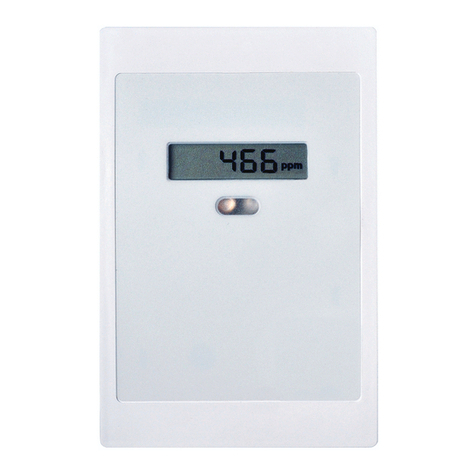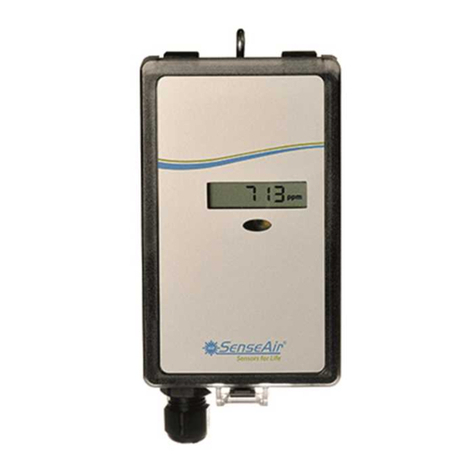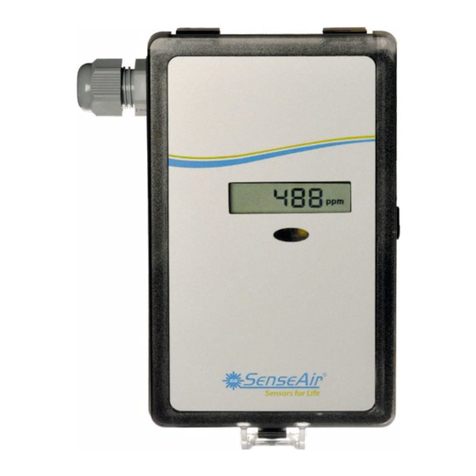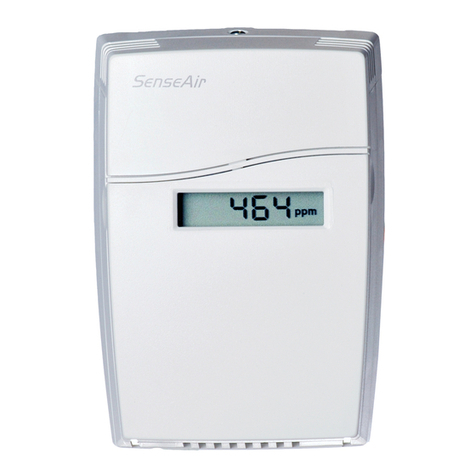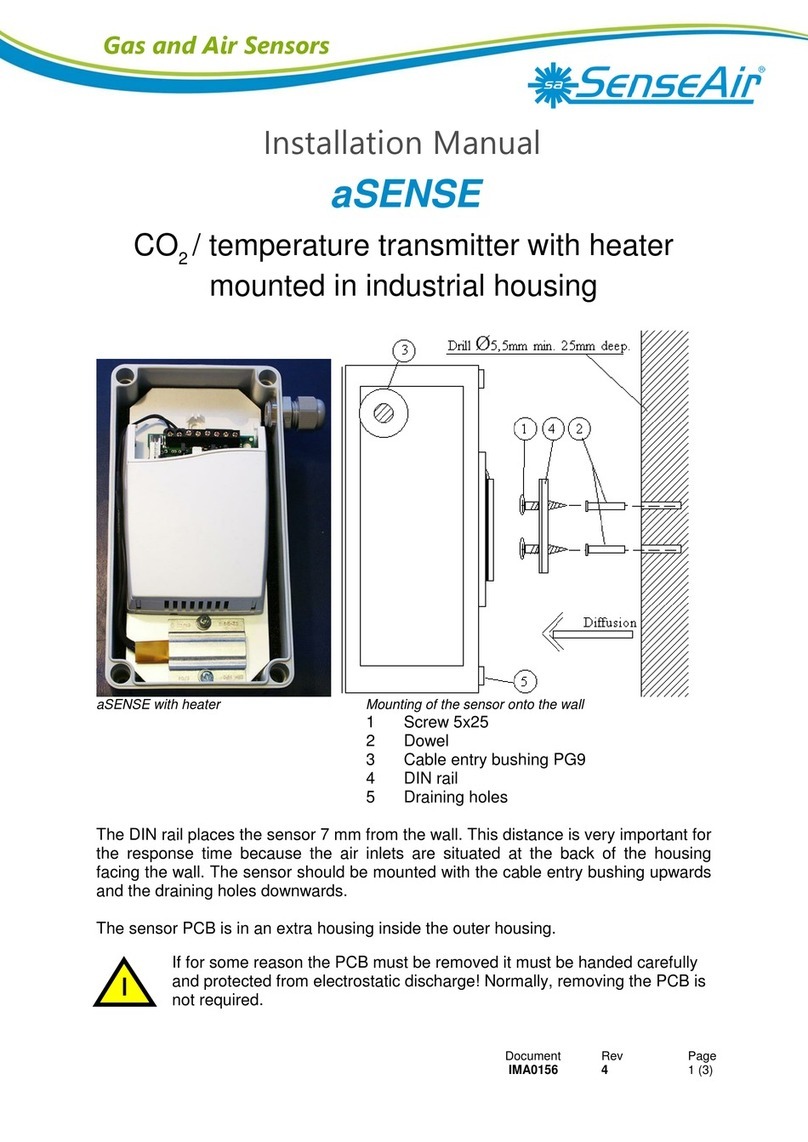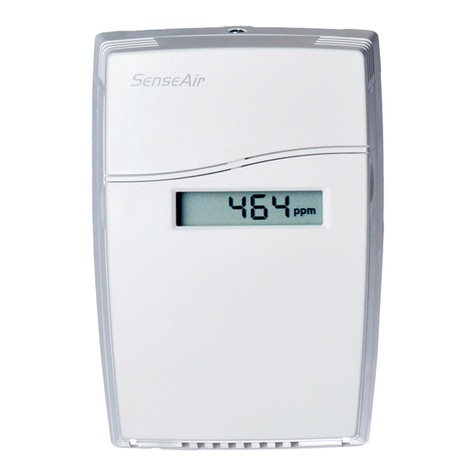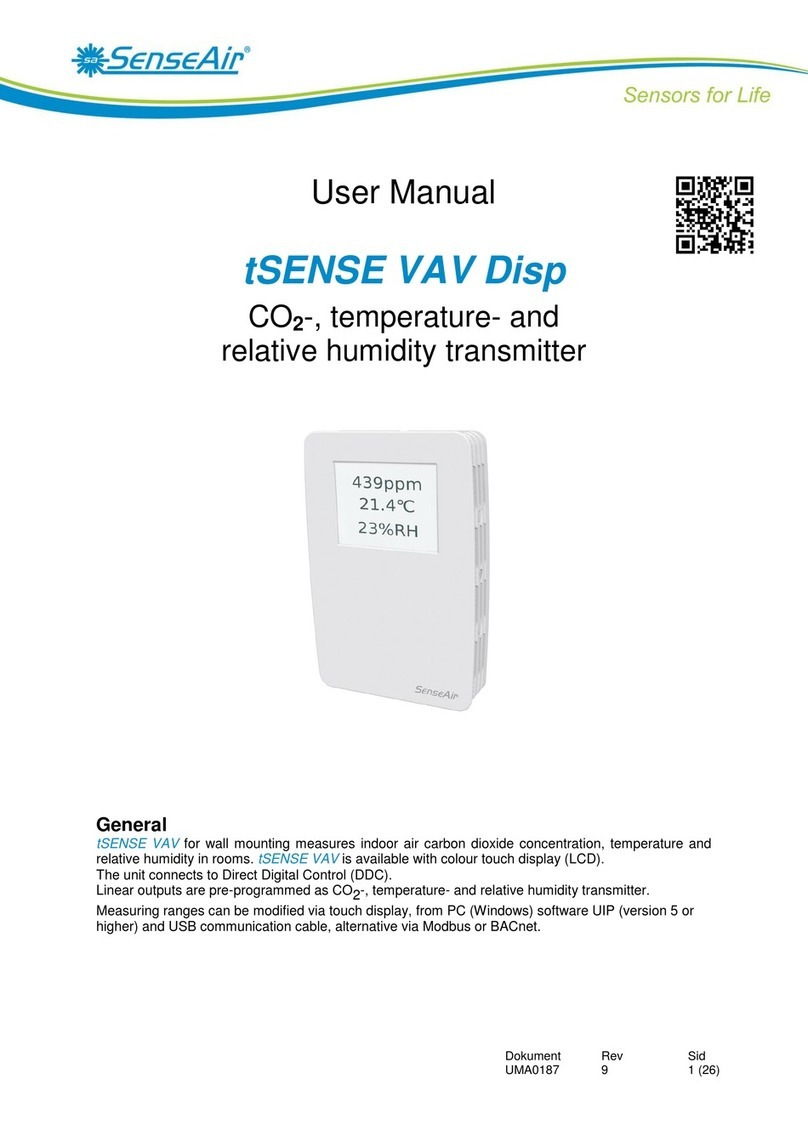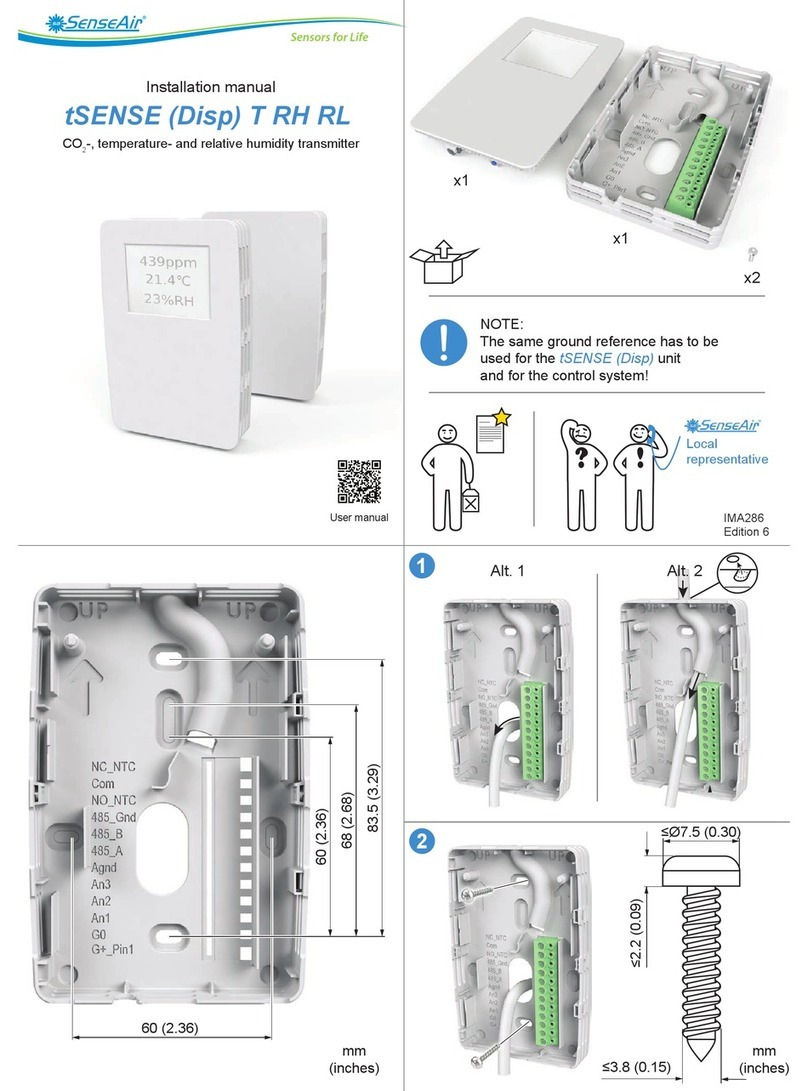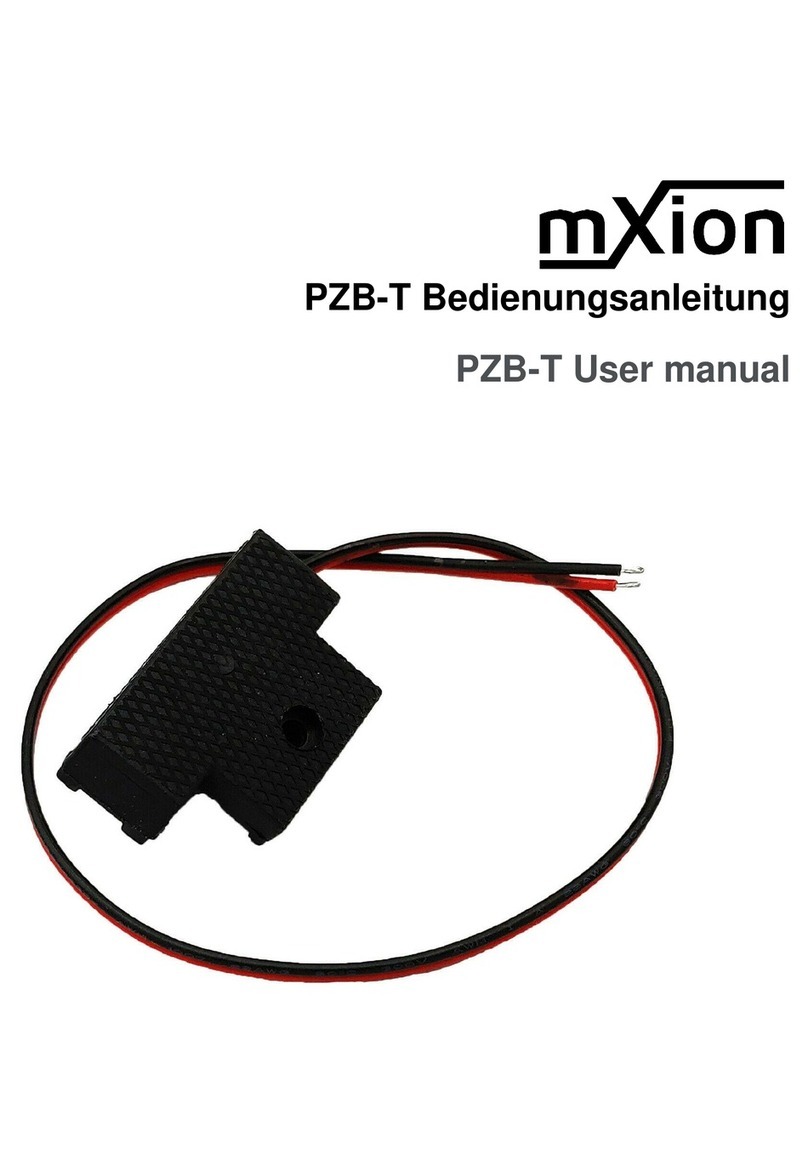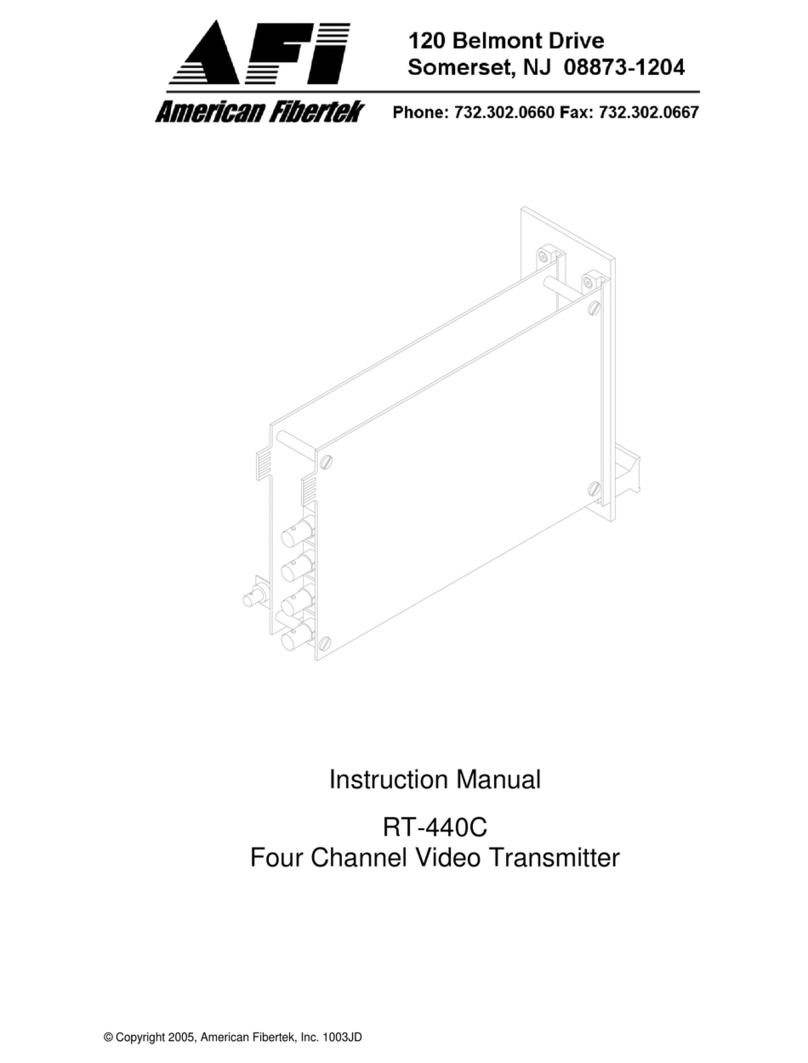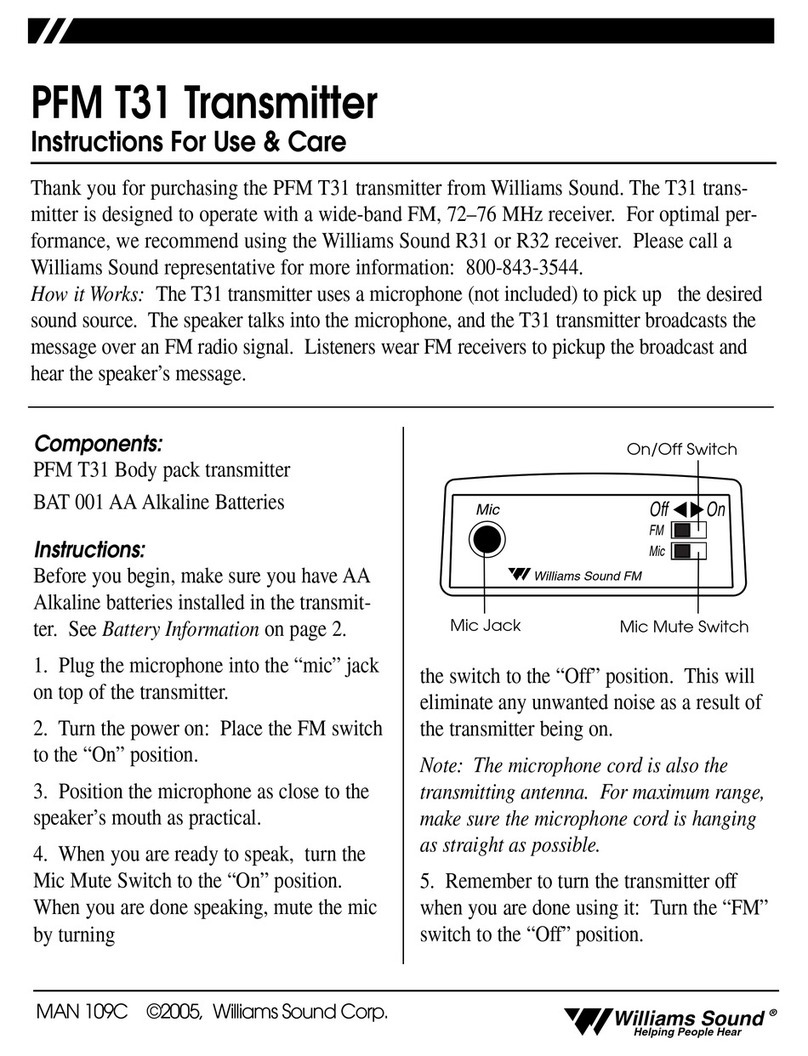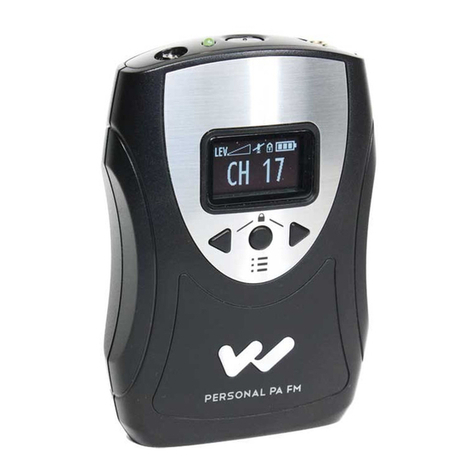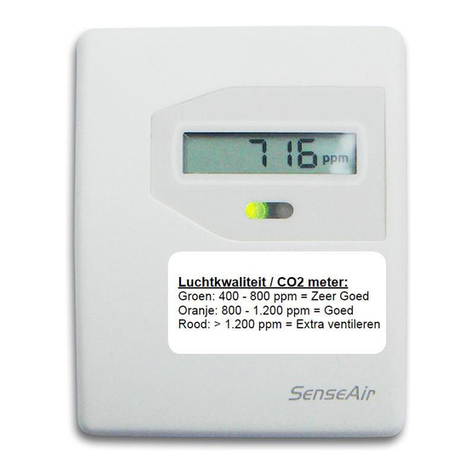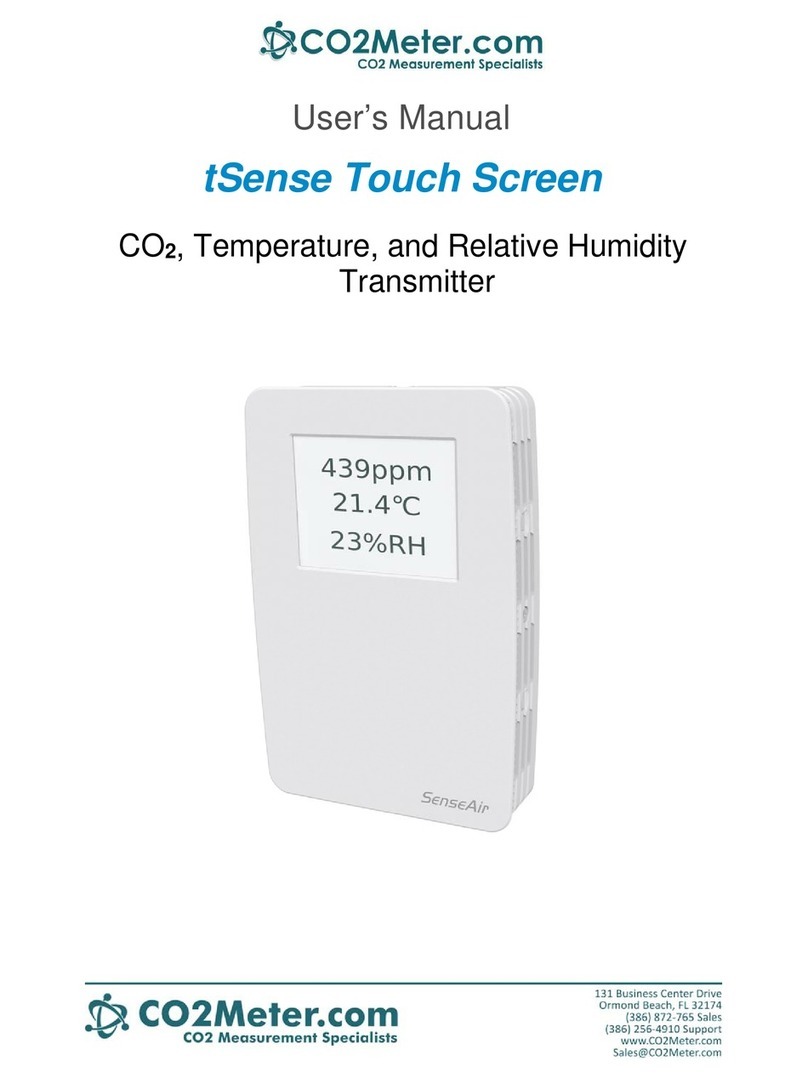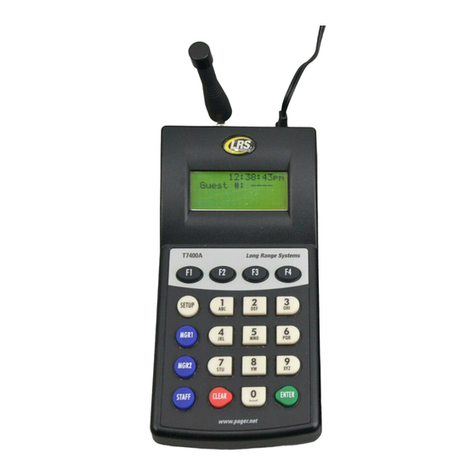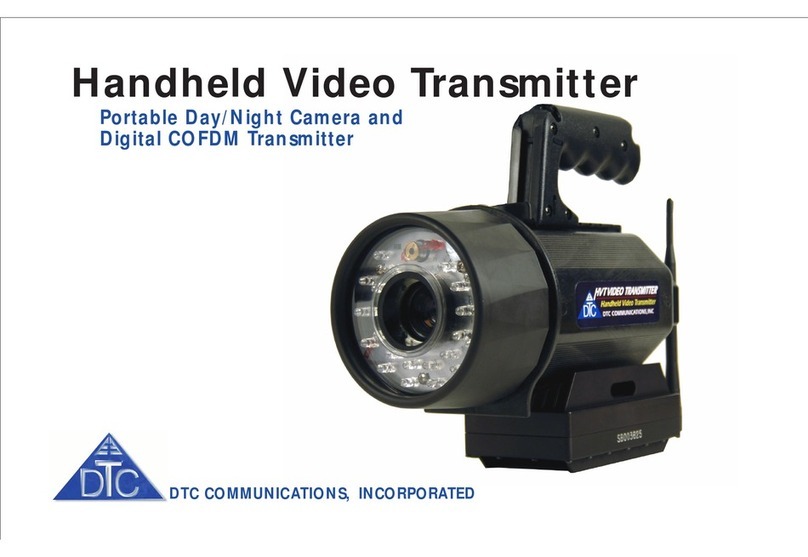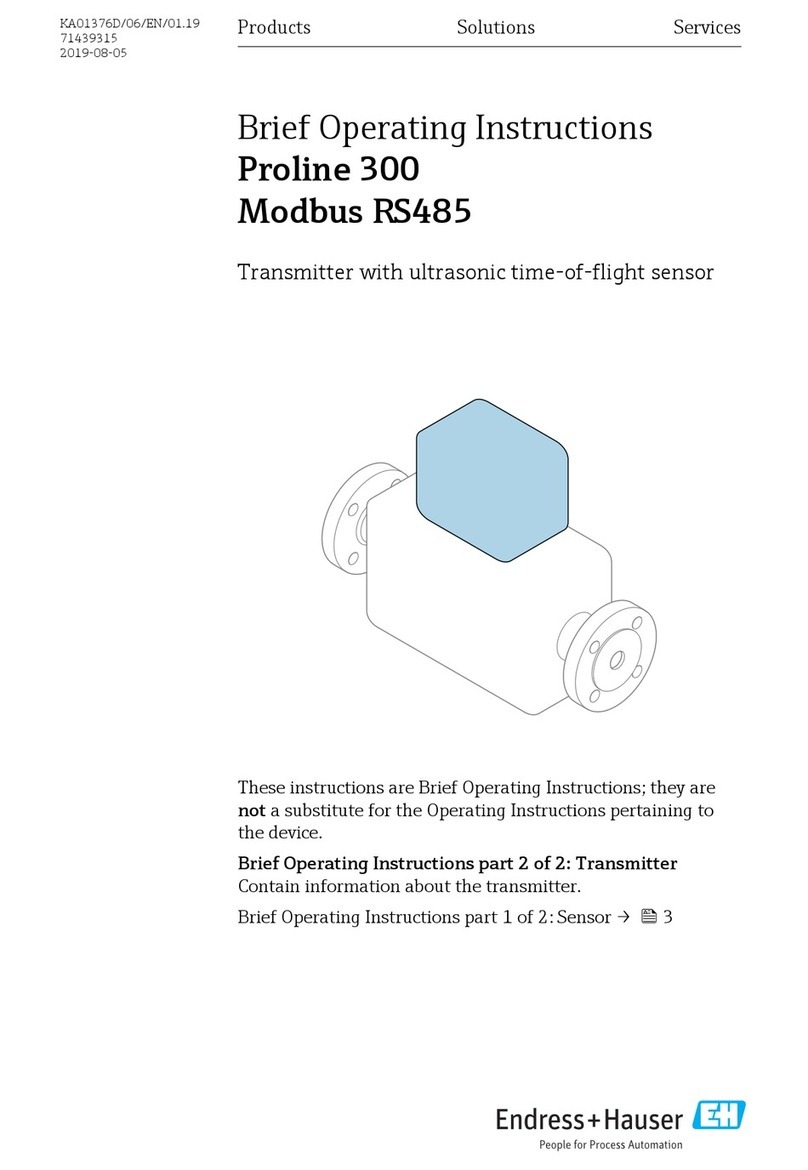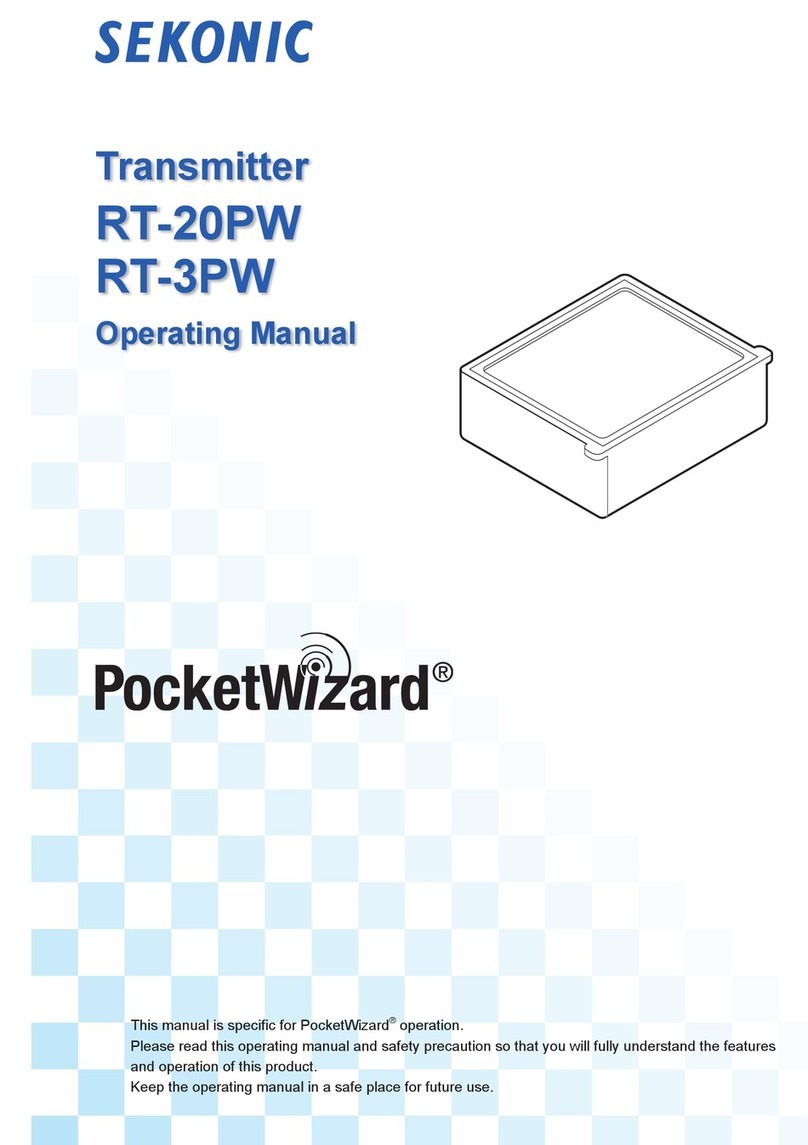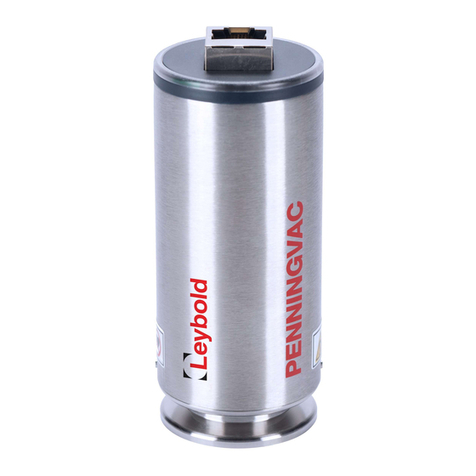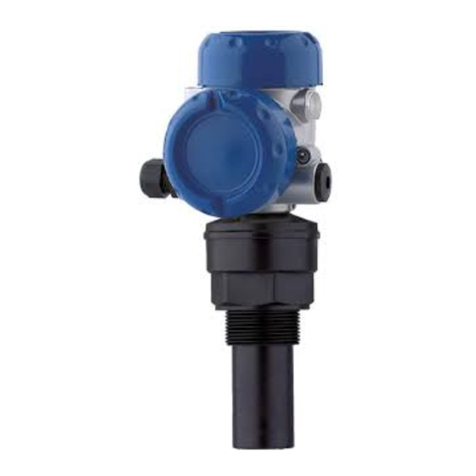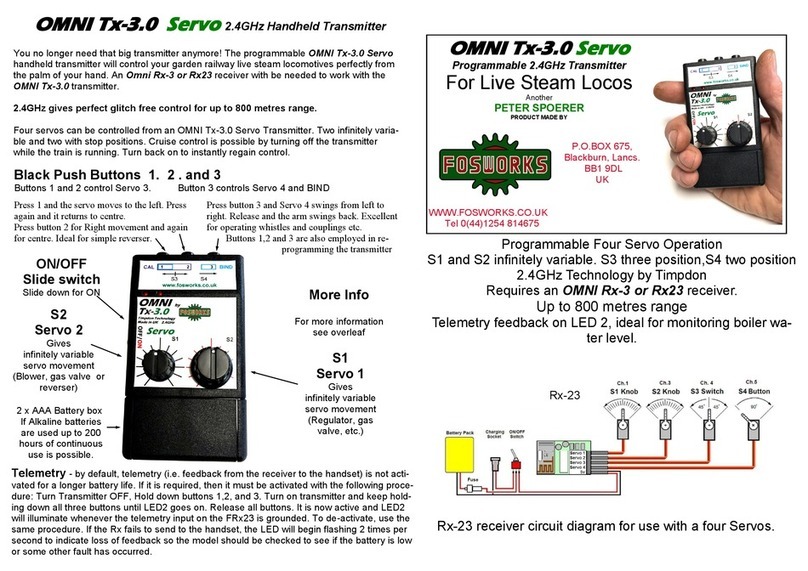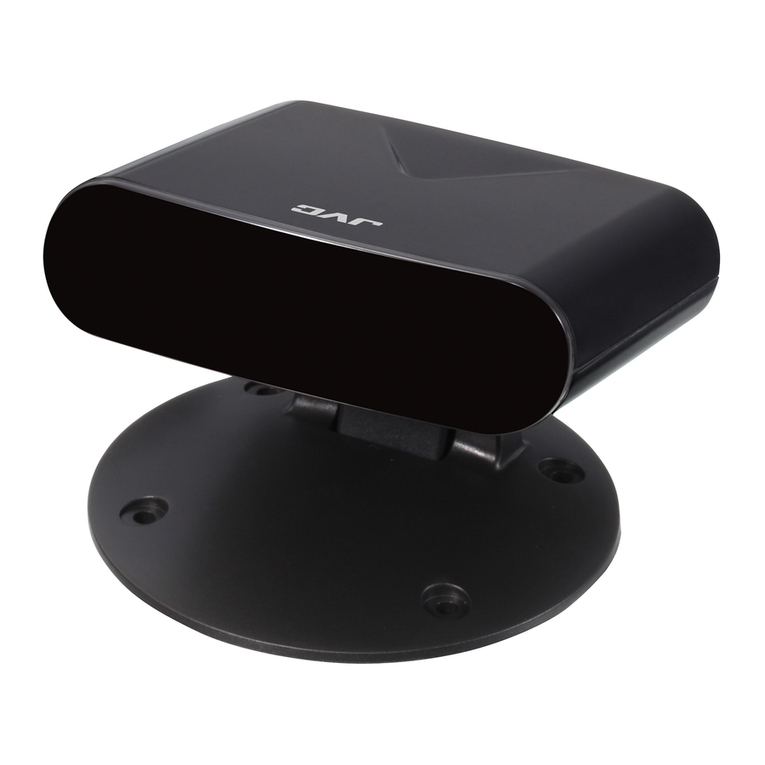
Remark:If several errors are detected at the same time the different error code numbers will be
added together into one single error code!
PLEASE NOTE! The sensor accuracy is defined at continuous operation (at
least 3 weeks after installation)
Maintenance
The aSENSE is basically maintenance free. An internal self-adjusting calibration
function takes care of normal long term drift associated to the CO2sensor. To secure
the highest accuracy, a time interval of five years is recommended between CO2
calibrations, unless some special situations have occurred. A zero calibration can be
performed by use of pure nitrogen or air that has passed through a chemical
absorber and a PC together with the UIP software version 5 (or higher). The Zero
Calibration bag can be used to produce carbon dioxide free air. The software can be
free downloaded from www.senseair.com. The RS232-cable and the zero calibration
bag can be ordered from SenseAir. The cable is to be connected to the UART port
slide connector (see Fig. 5). For change of control parameters and re-calibration
(CO2and temperature) this PC tool has to be used. The check can be done on site
without interfering with the ventilation system. Re-calibration can be done with a PC
orby shortening of marked holes for at least 10 seconds.
A Back-ground calibration is an easy way to correct a sensor’s zero point. The
sensor needs fresh air (380-420 ppm CO2). Shorten marked holes for at least 10
seconds.
This is for sensors with measuring ranges between 0-3000 ppm and 0-4%:
When a zero calibration shall be executed a plastic tube with 2.2 mm outer diameter
and 0.8 mm inner diameter shall be inserted in marked holes of the sensor. Plastic
tubing is connected to the tube. The gas flow should be between 0.3 and 1.0 l/min.
Shorten marked holes for at least 10 seconds. A succesful calibration is
acknowledged by 5 flashes of the yellow LED. If unsuccessful, please release input
and waits at least 10 seconds before repeating the procedure again. Make sure that
the sensor environment is steady and calm!
Figure 2 Part of the PCB with holes for gas inlets marked.







